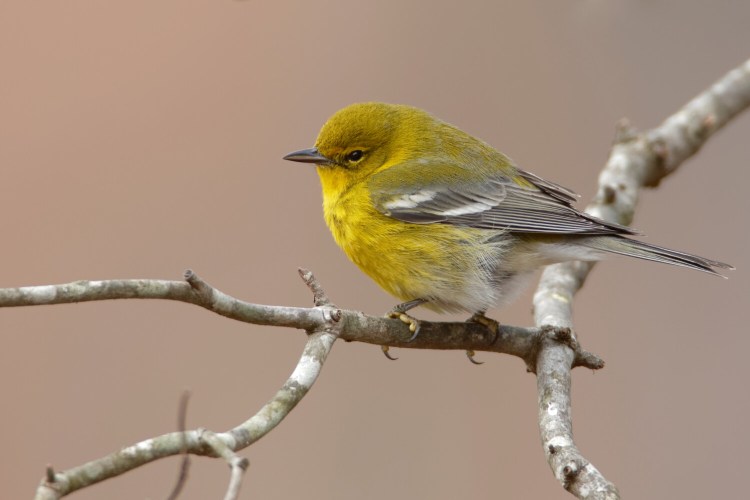This column will be the last one detailing highlights of recent Maine Christmas Bird Counts. A Christmas Count is a one-day census of all birds in a 15-mile diameter circle between mid-December and early January. The data provide an important tool for gauging changes in bird populations. This report is based on 25 Maine CBCs.
Because CBCs are conducted before the coldest part of the winter, counts often include lingering birds whose normal winter range is well to our south. Some of these lingering birds nest in Maine. Others are passage migrants, nesting to our north but lingering in Maine until they continue south. We expect that lingering birds will increase over time because of global warming; the CBC data provide us with a means of detecting such changes.
Portland was the hotspot for lingering waterfowl with two wood ducks, two gadwall, one northern pintail, two green-winged teal, three ring-necked ducks and five lesser scaup. Eastport had two gadwall and a green-winged teal. Biddeford had two gadwall, two American wigeon and 10 northern pintail. Mount Desert Island had a single green-winged teal and northern pintail. Waterville birders found two northern pintail and a ring-necked duck. That’s a diverse collection of lingering ducks.
Turkey vultures are now common breeders in Maine but migrate for the winter. One hardy turkey vulture was found in Augusta.
Great blue herons frequently show up on Maine CBCs as long as some open water is available. We had fewer than normal this year with two each in York County and Portland and one in Biddeford.
Migratory woodpeckers regularly show up on Maine CBCs. This year, York County and Thomaston each had a single yellow-bellied sapsucker. Sixteen northern flickers were found on eight different counts. The four flickers in Biddeford were the most with trios in Portland and Augusta.
We had an excellent smattering of lingering perching birds. A blue-headed vireo in Ellsworth was a great find.
Carolina wrens are sometimes referred to as half-hardy wintering birds. Some will eschew the fall migration, at least until bitter winter weather forces them south. This season, Carolina wrens occurred on six southern counts; Portland had the high count of 14.
Other wrens are less tolerant of cold weather so one or two winter wrens in Sweden, Monhegan Island and Portland were good finds. Portland also had a marsh wren. The most amazing wren was a house wren on Monhegan, the first ever for a Maine CBC.
Ruby-crowned kinglets are migratory breeding birds in Maine but occasionally pop up on Maine CBCs. This year two were found in York County and one on the North Penobscot Bay count.
Among the thrushes, a hermit thrush in Lewiston and two at North Penobscot Bay were unexpected. We are accustomed to finding a few eastern bluebirds on Maine CBCs, sometimes as far north as Waterville. This year’s bluebird count was amazing. There were 150 in Biddeford, 98 in York count and 57 in Portland with fewer numbers on nine other counts. The northernmost were in Farmington (3), Waterville (6), Bangor (10) and Orono (3). It’s wonderful to see these beautiful birds longer in the state now.
Pine warblers occasionally overwinter in Maine, but the 30 in Eastport was a mind-boggling total. York County had an orange-crowned warbler and a yellow-breasted chat was present in Portland and on Monhegan.
Waterville had a nice combo of a clay-colored sparrow and a white-crowned sparrow. Portland had a lark sparrow and a field sparrow.
We’ll end with two species that I think were the most remarkable on the state’s most recent Christmas counts. Flycatchers and swallows typically rely on flying insects for their sustenance, a resource in short supply in Maine in December. Nonetheless, one eastern phoebe was found on both the York County and Biddeford counts. Even more astounding were the 195 tree swallows in Portland and seven more in Biddeford. What were they eating? Both of these species normally return to Maine in early April before insects are common. Both species will eat fruit in the absence of insects. I am sure that these birds reconsidered their forced fruit-eating diet and are now in warmer climes!
Herb Wilson taught ornithology and other biology courses at Colby College. He welcomes reader comments and questions at whwilson@colby.edu.
Comments are not available on this story.
Send questions/comments to the editors.


